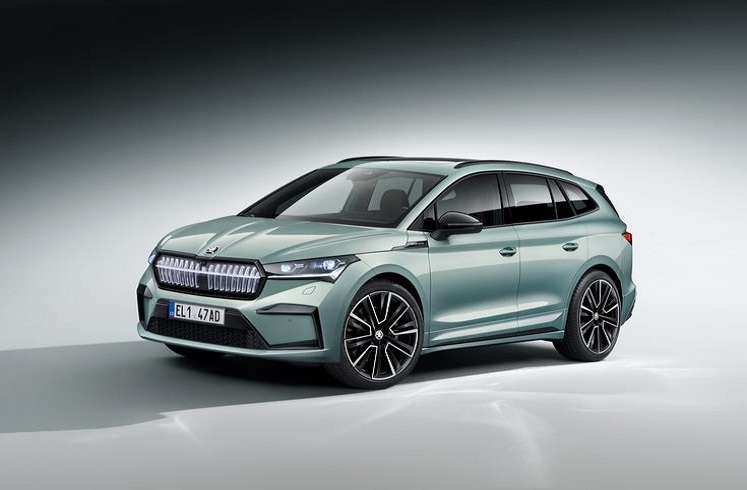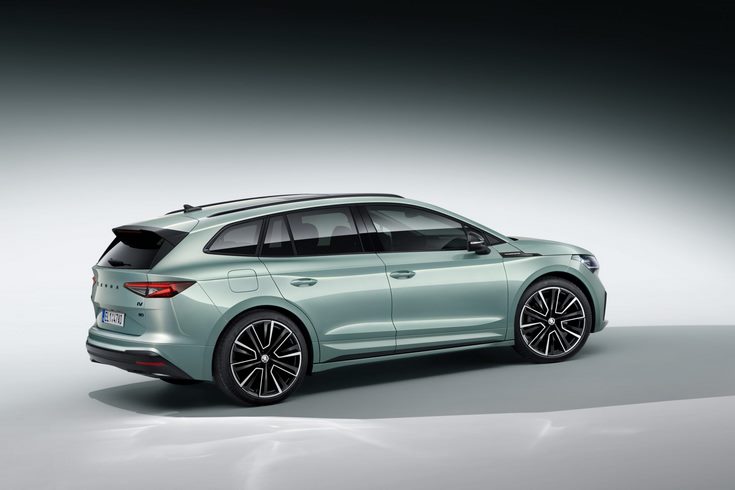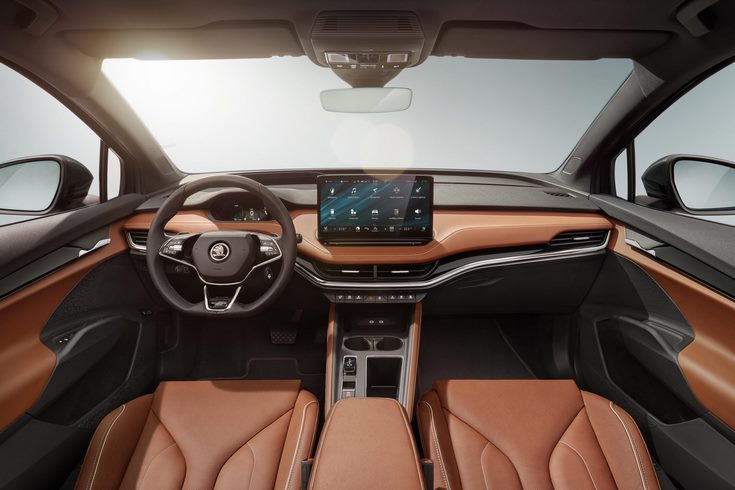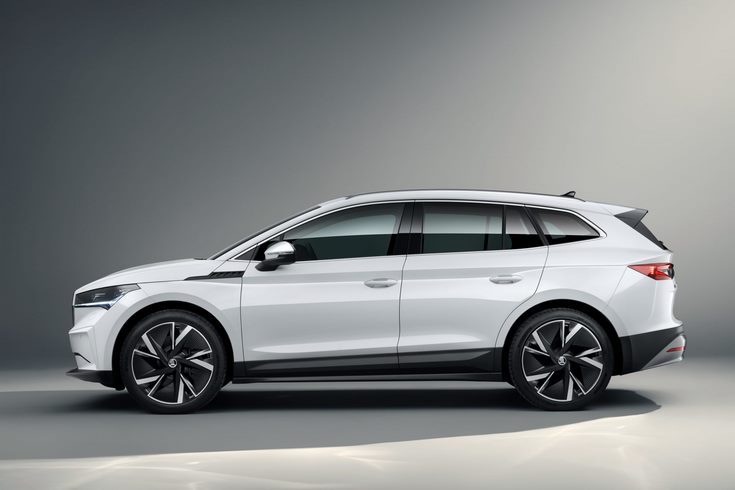The Enyaq iV is the first-ever pure-electric SUV from Skoda, also the first production model based on Volkswagen’s Group’s Modular Electrification Toolkit (MEB). The electric SUV gets a choice of three battery sizes and five power outputs ranging from 109 to 225 kW, with a driving range of up to 510 kms in the WLTP cycle.

Say hello to Skoda’s first electric SUV – the Enyaq iV! Designed to offer quick charging, sustainable driving enjoyment and outstanding aerodynamics, the Skoda Enyaq iV is the Czech’s car maker’s latest mantra to crack the growing electric SUV or crossover segment in Europe and other Western markets. The brand’s flagship EV will be made at the company’s main plant in Mladá Boleslav, making it the only model in Europe based on Volkswagen Group’s MEB platform to be built outside Germany. It will go on sale in international markets in the coming months.
Sharing VW’s MEB architecture, the Enyaq iV benefits from what is known as the skateboard platform, in which the battery is incorporated into the floor to save space. The all-electric SUV is available with three battery sizes, five power variants and rear- or all-wheel drive, and therefore caters to a wide range of needs for a variety of uses. Requiring little time to recharge and offering ranges of up to 510 km in the WLTP cycle, the ENYAQ iV is ideal for everyday use as well as for covering long distances, claims Skoda.

In the Enyaq iV, Skoda is making use of an all-new drive concept that nevertheless makes some reference to the company’s history – just as with many of the brand’s past models, it is making use of rear-wheel drive for its new electric SUV too. Further, the SUV is a versatile partner for the daily commute as well as long distances. Its maximum range is 510 km in the WLTP cycle, and it has a superfast-charging capacity of up to 125 kW. The 82-kWh battery, which has a net capacity of 77 kWh, can be charged from 5 to 80 per cent in just 38 minutes at correspondingly powerful DC charging points. At home, the EV can conveniently be ‘refuelled’ overnight using an AC wall box of up to 11 kW – depending on the battery size, this process takes six to eight hours. It is equipped with a special iV universal charger that fits all conventional charging sockets.
Offering three battery sizes and five different power variants, the Skoda Enyaq iV makes driving both sustainable and fun. In addition to the one on the rear axle, the two most powerful models are also fitted with a second electric motor on the front axle that transfers the SUV’s torque of 425 and 460 Nm respectively to the road via all four wheels. The entry-level variant is fitted with a 109-kW rear-mounted engine and rear-wheel drive, offering a maximum torque of 220 Nm. Its lithium-ion battery has a gross capacity of 55 kWh (52 kWh net) and it has a range of up to 340 km. Equipped with a 62-kWh battery (58 kWh net), the 132-kW Enyaq 60 iV can cover up to 390 km; its maximum torque is 310 Nm.

The Enyaq 80 iV has an output of 150 kW, torque of up to 310 Nm and, at 510 km (WLTP), boasts the longest maximum range. The 82-kWh battery (77 kWh net) is also used in the two all-wheel-drive variants, combined with the second electric motor on the front axle, the Enyaq 80 iV produces 195 kW and the Enyaq RS iV delivers 225 kW. Both of these models have a range of 460 km.
The range-topping RS iV variant is particularly fun to drive, claims the automaker. It accelerates from a standing start to 100 kmph in just 6.2 seconds, and achieves a top speed of 180 kmph – 20 kmph faster than other power variants. In addition, the this variant can tow a trailer weighing up to 1,400 kg – the SUV can be fitted with an electrically retractable tow bar as an optional extra.

Moving on, the new e-SUV’s aerodynamics allow for a high level of efficiency and long range. This is also evident in the drag coefficient (cd) from 0.27, which is achieved with the help of tyres that boast a particularly low rolling resistance. A heat pump, which is used for the heating and air conditioning in the interior, is an optional extra for the electric SUV. A highly efficient heat pump system compresses refrigerant under high pressure. This produces heat, which is used to warm up the cold air flowing into the car. This way, approximately 3 to 4 kWh per 100 km less energy from the battery is used to power the high-voltage heater – meaning the range is up to 30 per cent greater than in electric vehicles without a heat pump in temperatures as low as -25°C.




